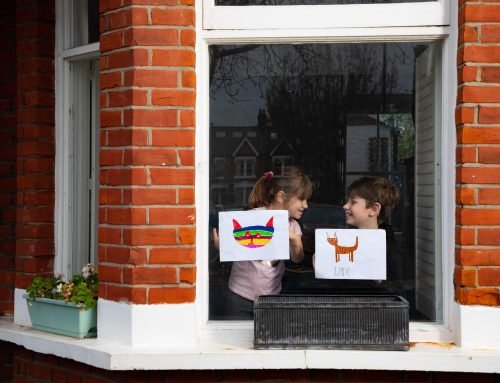Standing on a platform waiting for his train as he often did, the art curator Ben Moore found his eye drawn to a poster on the wall opposite him. A doubletake confirmed what he knew, but needed a moment to digest, which was that the face looking back at him was that of his brother Tom, who’d been missing for 16 years.
“I was there in my own world and just happened to look up, so hadn’t expected to see the poster,” Ben explains. “To come across Tom like that on the street and captured so accurately actually made me really happy. I know that picture really well but somehow seeing it in a different context made it fresh, as if I was seeing it for the first time.”
The sighting of the poster wasn’t to be the last on this particular day; a little later, having boarded a bus and still processing the wave of emotions that the poster of his brother had produced, Ben found himself passing it again and again, with Tom staring down at him on one street corner and then another. “It was as if he was with me everywhere,” he says.
The posters had been put up as part of the publicity campaign for an art exhibition that Ben had curated earlier for the charity Missing People to mark its 25th anniversary. Titled Unmissable, the exhibition featured aseries of portraits of missing persons created by a variety of emerging and established artists selected by Ben. Each artist worked from a photo used in the campaign to highlight the missing person’s disappearance. The portrait of Tom, which had caught Ben’s eye on a poster in the street, was the work of Carne Griffiths. “The picture actually began life as a pencil sketch of the original photofit done by a police artist and was then givento my parents,” Ben explains.
Other artists whose work featured in the exhibition include Charming Baker, Charlotte Colbert, Keith Coventry, Samira Addo, Ian Bruce, Nina Mae Fowler, Chris Moon, Mark Metcalfe, Rebecca Fontaine Wolf and Paul Benney.The exhibition also contained a new portrait of Richard Edwards, former guitarist and lyricist of the Manic Street Preachers, by Will Teather.
Spotting the poster during his daily commute reminded Ben of both the power that a picture has when it comes to jolting memories and the importance of keeping the faces of The Missing in the public eye. “If you can maintain awareness and momentum, it’s probable that someone who knows someone who might know something will talk about it,” he says. “Shows like Unmissable provide hugely important opportunities to inch that little bit closer to finding Tom and others.”
Ben points out that reigniting campaigns have proved to be effective in producing results. “The publicity seems to generate a reaction and the police always seem to get in touch with clues or half clues,” he says.
The Unmissable show was no exception, with Ben explaining that it led to “significant and quite freaky” developments linked to Tom’s case. “We received news that a man whose body was found in Italy had been using my brother’s name before he died,” he says. “This is really significant since it indicates that the deceased might have known Tom. We’re now hoping for news of the dead man’s real identity and believe it could be an important new lead.”
Ben’s ongoing search for his brother and long association with the Missing People charity means he is well informed of the sterling work that the group undertakes. “Not everyone realises that they provide a round-the-clock confidential hotline for the people themselves that have chosen to go missing for whatever reason, so they can let their family know they’re safe but without divulging their whereabouts,” he explains. “People who are dealing with the emotional fall-out of a missing person can also call the line anytime of the day if they want to talk.”
Set up by Mary Asprey OBE and Janet Newman OBE following the disappearance of estate agent Suzy Lamplugh in 1984, the initiative first operated as the National Missing Persons Helpline. “My family’s connection dates back more than half of the group’s lifetime, so I’ve watched it grow,” Ben says. “It’s been really satisfying to see it develop and witness the work it does.”
The Unmissable show, which formed part of The Other Art Fair, presented by Saatchi Art, certainly proved to be an unforgettable way of marking the charity’s 25 years of work, producing a rollercoaster of emotions amongst both the artists who took part and the families of the missing persons whose portraits featured in the show.
“I don’t mind admitting that I was slightly worried the whole project might come across as a bit sensationalist, but while it was very poignant, with the artists meeting the families for the first time and the press all there, it didn’t come across in that way at all,” he says.
One of the things that has stuck with him was the mood of the evening. “Usually the feeling amongst relatives of missing persons at get-togethers is quite sad, but on this occasion, it was also quite celebratory,” he says. “I also noticed how people walking in to view the show with no previous knowledge of the theme looked at the artwork in an entirely different way once they knew the backstory.”
Ben’s approach to searching for Tom is also more upbeat than some might expect, with the new ‘clues’ providing added impetus. “I find it exciting, it’s like I’m searching for the Holy Grail or an ancient relic and I’m full of curiosity,” he says. “Like Tom, I’m something of a traveller and looking for him has contributed to my own journey. I want to hear where he’s been and what he’s discovered – it’s one of many reasons I want to find him.”
By Miriam Dunn






Leave A Comment